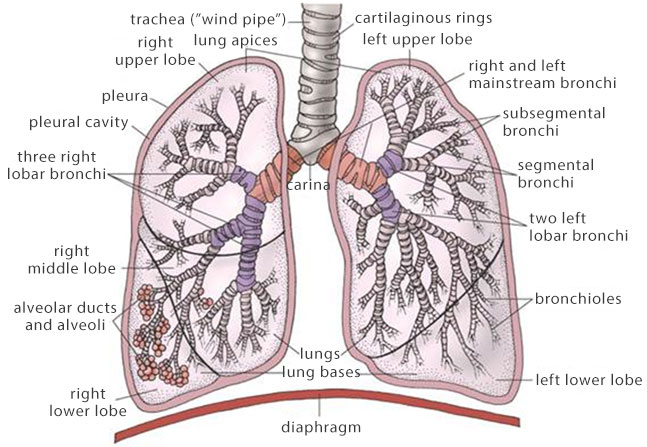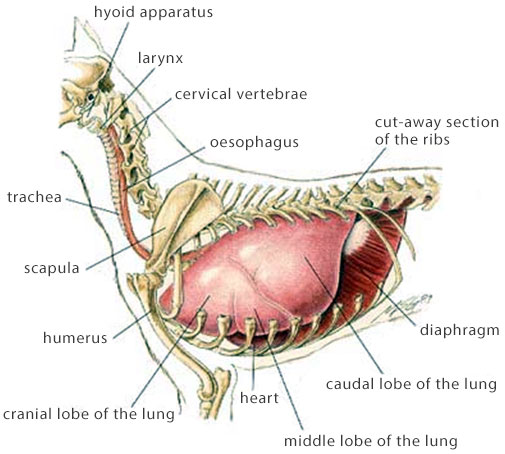RESPIRATORY SYSTEM
- Definition of Respiratory System
- Types of Respiration
- Breathing
- Importance of Respiratory System
Definition of Respiratory System
Respiratory system includes all the organs and tissues associated with the exchange of gases between the animal and its environment leading to the release of energy.


Types of Respiration
- Aerobic respiration
- Anaerobic respiration
1. Aerobic Respiration
This is a form of respiration which takes place in the presence of oxygen.
2. Anaerobic Respiration
This is a form of respiration which takes place in the absence of oxygen. When glucose is broken down, it releases lactic acid and energy in animals, but in the plant the end product of anaerobic respiration are alcohol, carbondioxide and energy.
Breathing
During breathing, air flows from the nostrils to the pharynx to the larynx and to the lungs. This breathing activity leads to the movement of the rib cage known as the processes of breathing. This involves:
- Inspiration/inhalation/breathing in
- Expiration/exhalation/breathing out
Definition of Inspiration
This involves the breathing of air into the lungs.
You are viewing an excerpt of this lesson. Subscribing to the subject will give you access to the following:
- NEW: Download the entire term's content in MS Word document format (1-year plan only)
- The complete lesson note and evaluation questions for this topic
- The complete lessons for the subject and class (First Term, Second Term & Third Term)
- Media-rich, interactive and gamified content
- End-of-lesson objective questions with detailed explanations to force mastery of content
- Simulated termly preparatory examination questions
- Discussion boards on all lessons and subjects
- Guaranteed learning